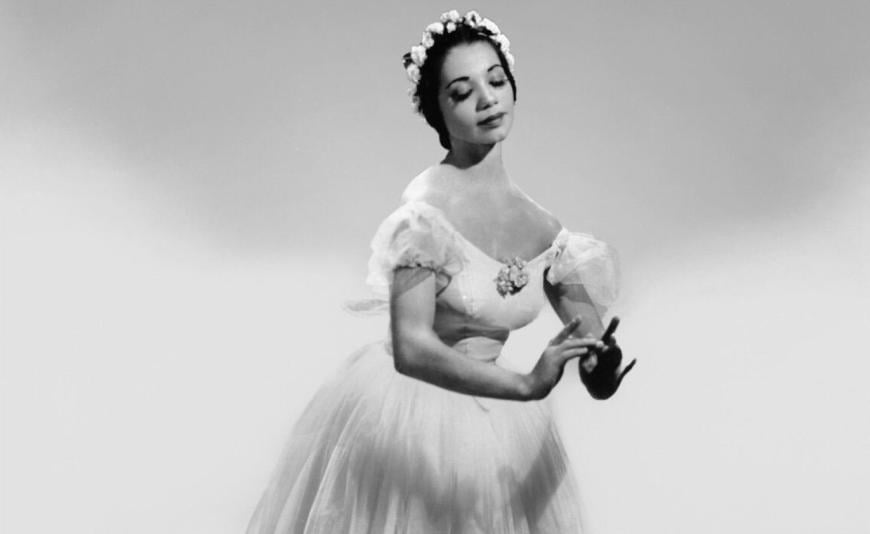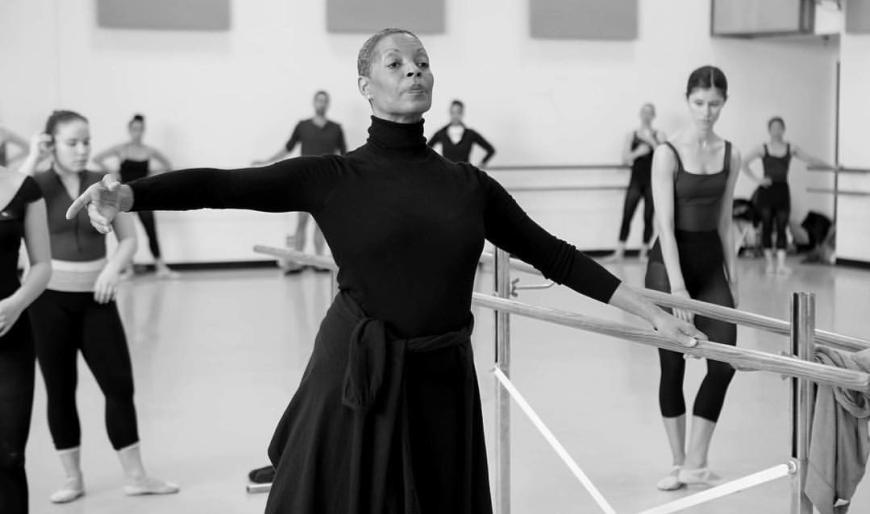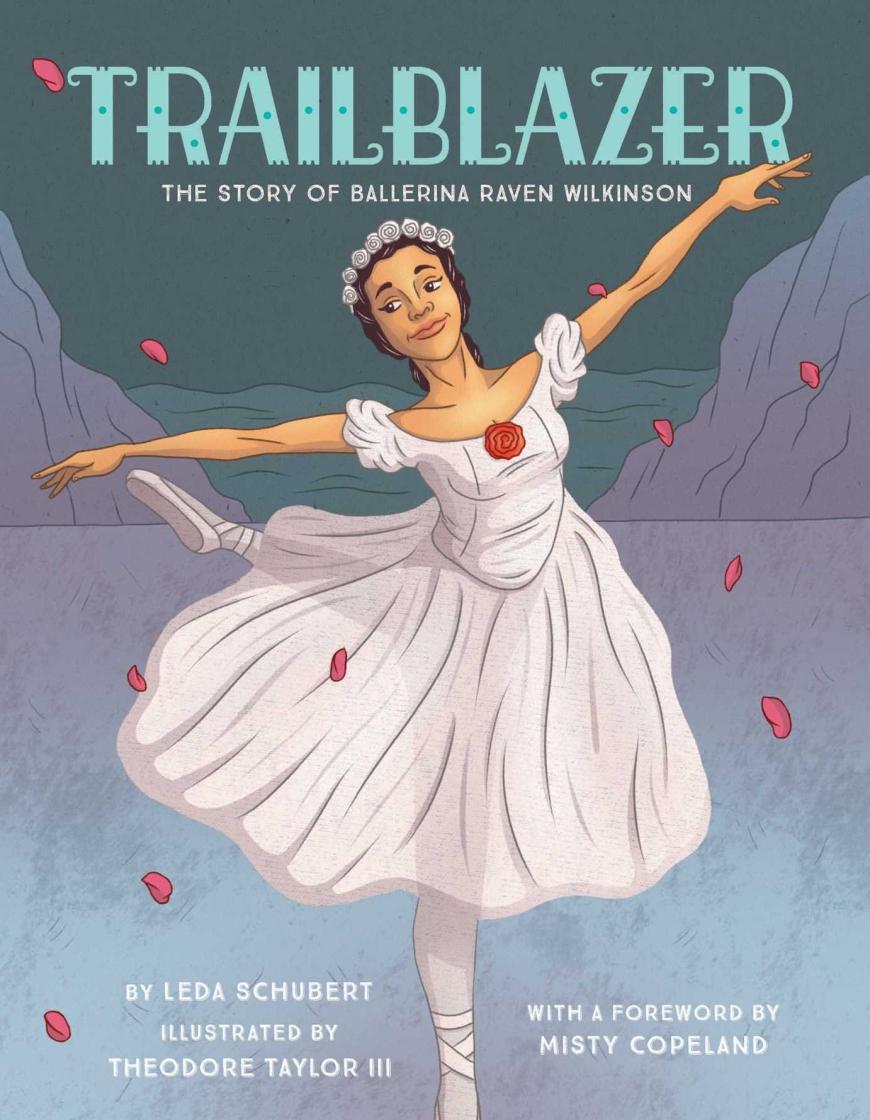
Calling all balletomanes! Mark your calendars for March 19, when the late American dancer Raven Wilkinson — she’s credited with being the first African American woman to dance for a major classical ballet company — will be celebrated in a talk and performance program led by Robyn Gardenhire and Ariyan Johnson. Gardenhire, the founder and artistic director of the erstwhile City Ballet of Los Angeles, will join forces with UC Irvine dance historian Johnson at the Ebell of Los Angeles to remember and honor the memory and achievements of Wilkinson.
Born in 1935 in Harlem, New York, to middle-class parents, Wilkinson, who died in 2018, broke the color barrier in 1955 when she signed a contract to dance full-time with the Ballet Russe de Monte Carlo. She also went on to dance with Dutch National Ballet as a soloist and additionally performed with New York City Opera. Gardenhire, who became a good friend of Wilkinson’s after meeting her in 2011, said she hadn’t heard of the ballerina until she read an article about her and decided to reach out by telephone.

“I called New York City Opera and asked if I could get a hold of her. It sounded like I was talking to a stagehand,” recalled Gardenhire, “so it was shocking to get the phone call from Raven two days later. We had a long conversation about the dance world and what was going on, and I then had the opportunity to go to New York, and we ended up becoming friends. She never came to Los Angeles, but in New York I would meet her at cafes or at Lincoln Center. When she passed, I wanted to celebrate her.”
And in the same spirit in which she had reached out to Wilkinson, Gardenhire sought out Johnson, who is also an actress, television director, dancer, and choreographer, asking her if she wanted to be part of the March 19 festivities, which will include a performance by ballet dancers from the LA County High School for the Arts and the Colburn School, with Colburn pianist Saiko Fujii also performing.
“The importance of bringing dancers’ legacies to light, specifically [Wilkinson’s], is always a part of who I am … as an African American woman,” explained Johnson. “It’s important to highlight pioneers like Wilkinson, who went through a difficult time just to dance. It was brilliant of Robyn to think of this event and to spotlight this woman’s legacy.”

But Wilkinson’s six years with Sergei Denham’s Ballet Russe de Monte Carlo were a mixed bag of joy and sadness. Promoted to soloist in only her second season with the troupe, she would go on to dance a range of leading roles, including the waltz solo in Les Sylphides. And since the Ballet Russe was predominantly a touring company, the ballerina was confronted with racism during bookings in the Deep South. In 1957, an Atlanta, Georgia hotel proprietor refused to let her stay with the rest of the company, forcing Denham to send his charge back to New York, where she would rejoin her colleagues once their gigs took them closer to the Mason-Dixon line.
And like other Black performers at that time, Wilkinson had run-ins with the Ku Klux Klan. Though fair-skinned and encouraged to wear pale makeup onstage, the dancer refused to hide her race, and during one performance in Alabama, two Klan members barged into the theater and disrupted a Ballet Russe performance.
Because such racial occurrences took their toll on Wilkinson, she stopped performing during the Southern tours, ultimately leaving the Ballet Russe in 1961. And while she auditioned for several American companies, including New York City Ballet and the Metropolitan Opera Ballet, Wilkinson was not accepted, and she stopped dancing for two years.
“Knowing the story of Raven’s life is important, but I’ll also talk about how I met her,” explained Gardenhire, whose dance academy was founded in 2001 but folded during COVID. “I put the choreography together for the “Breath Scene” from Les Sylphides, and it has the feeling of the work,” she added. “There are four 11th- and 12th-grade dancers, and the pianist will also play some classical pieces, [including] Chopin.
But it seems that you can’t keep a good dancer down, and in 1967, upon a colleague’s recommendation, Wilkinson joined Dutch National Ballet as a second soloist. Moving to the Netherlands, she performed in works ranging from The Firebird and Giselle to George Balanchine’s Serenade. But after seven years with the company, Wilkinson, then 38 and feeling homesick, returned to the U.S., where she was subsequently invited to dance with New York City Opera, performing as a character dancer and actor until the company left Lincoln Center in 2011.

The Ebell Club celebration will also include wine and cheese, and along with oral presentations, Gardenhire and Johnson plan on using visual aids to showcase Wilkinson. “I’m bringing all of my tricks,” noted Johnson, “to make sure we have a show that is entertaining and educational. But we’re still mapping out the flow [of] how we weave in and out of visuals and live dancing and testimonials [to make this] a multidimensional experience.”
Wilkinson, too, seemed to lead a kind of multidimensional life. In her later years, the ballerina developed a friendship with and was also a mentor to Misty Copeland, who became the first African American woman to be promoted to principal dancer in American Ballet Theatre’s then-75-year history. In 2015, Wilkinson joined Copeland onstage after the latter made her debut as Odette/Odile in Swan Lake. Three years later, Leda Schubert published a picture book, Trailblazer: The Story of Ballerina Raven Wilkinson, with a foreword by Copeland.
And while Copeland won’t be at the celebration, Gardenhire said that the ballerina did send several signed copies of the book. Noted Johnson: “The rounded aspects of who [Wilkinson] was — her reach to the next generations, the continuum — that’s one of the things I feel is so significant about her.
“In that society at that time,” she added, “how we were interacting with African Americans, [Wilkinson] had a choice and a sense of her destiny, who she was. There are so many works that reflect this woman’s legacy — a legacy of Black ballerinas — when she said, ‘All I want to do is dance ballet.’ So, I’m going to highlight the fact that this pioneer had to maneuver a system that did not want to embrace her. That’s why this event is so important.”
Johnson pointed out that she’s eager to share new knowledge of Wilkinson and “reinforce some information that we already know. But the idea of the celebration is to remember. A lot of times we don’t see these African American pioneers remembered in such a way, so it’s important to continue to celebrate, continue to remember, continue to see how far-reaching their artistry was.”




